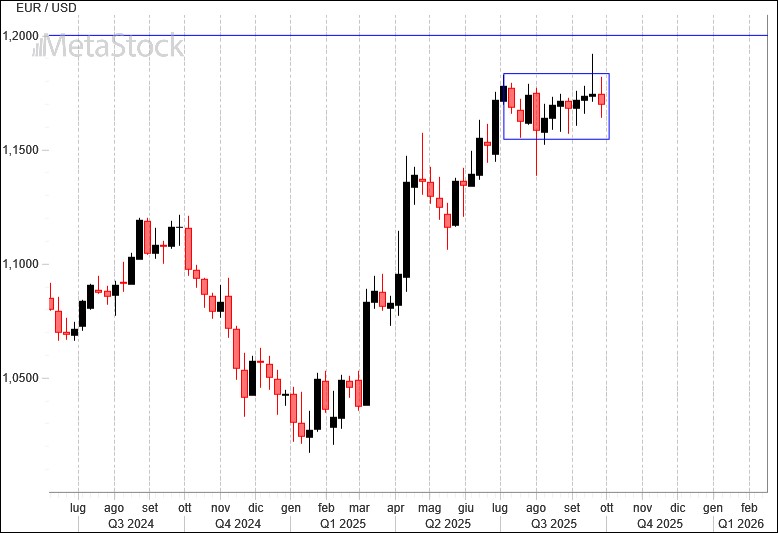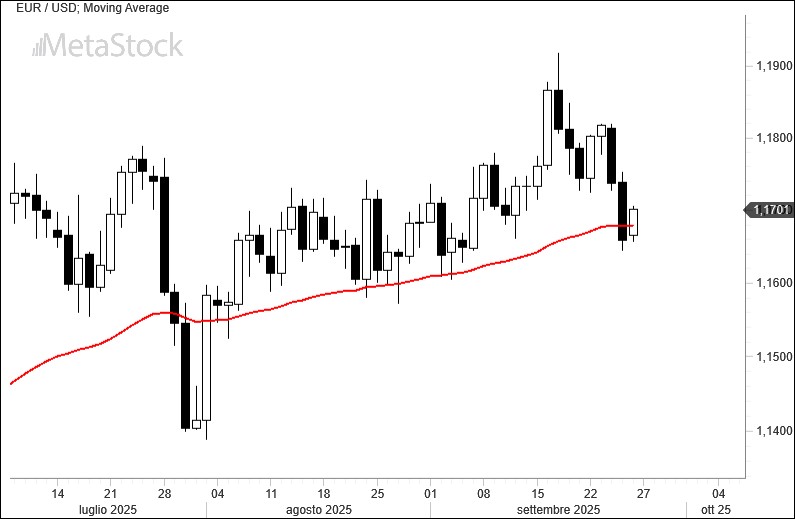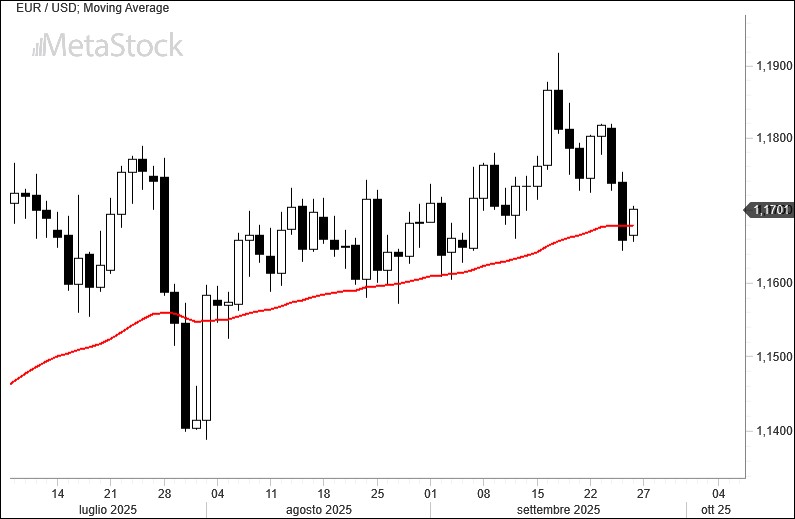- The Federal Reserve remains divided. Its latest rate cut was more of a fine-tuning exercise than the start of a new cycle, with policymakers wary of inflationary flare-ups—especially after the White House imposed new tariffs. Fed Chair Jerome Powell reiterated his caution last week, reigniting tensions with President Trump.
- Across the Atlantic, Europe is grappling with economic uncertainty and heightened geopolitical risk along its eastern borders. The chance of a military incident is rising, while Germany’s economy shows fresh signs of slowing. Even so, the ECB remains worried about inflation.
- Against this backdrop, the euro tried once again to break through resistance at 1.18 but failed. A wave of pessimism surrounding the dollar is preventing the pair from pushing higher, though a break above that level could open meaningful upside.
Markets Waiting on the Fed
Investors continue to expect the Fed to lean toward further easing, with more rate cuts on the horizon. That helps explain why the dollar remains stuck at yearly lows despite U.S. interest rates still exceeding those in most major economies. Globally, monetary easing remains the dominant theme, overshadowing any tightening efforts.
The greenback appears to have already priced in much of the Fed’s expected path—evident in heavy short positioning among non-commercials in the futures market. Powell occasionally steps in as a firefighter, tempering expectations to prevent a more damaging slide in the currency.
Last week he reminded markets that while the labor market does justify some policy adjustment, the disinflation process is far from complete. New trade tariffs on pharmaceuticals, furniture and heavy vehicles announced by Trump only complicate the Fed’s task.
Meanwhile, Germany’s Ifo index came in weaker than expected, helping to cap yet another euro attempt at 1.18.
The overwhelmingly negative sentiment toward the dollar, combined with Europe’s constant geopolitical jitters, is keeping EUR/USD range-bound for now. The majority of traders still expect a bullish breakout eventually—but what could shift that consensus? Possibly an ECB return to ultra-low rates, or a U.S. inflation spike. All eyes will be on early October U.S. jobs data for clues on the Fed’s next steps in the final stretch of 2025.
Technical Analysis: Dollar, Another Assault Repelled

The pair has been stuck in a holding pattern for weeks. Weekly candles show alternating bursts of volatility and flat sessions, but always closing close to the 1.17–1.18 area. Analysts see that zone as a staging ground for a new rally, though conditions aren’t yet in place. For now, traders are simply waiting for the next market mover—any excuse to buy or sell dollars.
For the moment, the preferred strategy remains long EUR/USD on dips toward 1.16.

Since late August’s Jackson Hole meeting, the 50-day moving average has underpinned the euro’s rally, even as attempts to break above 1.18–1.19 lack conviction. The average now sits around 1.168, where it has offered solid support. A drop below that level would crack the bullish trend and could see the dollar push back toward 1.14.


Leave a Reply
You must be logged in to post a comment.